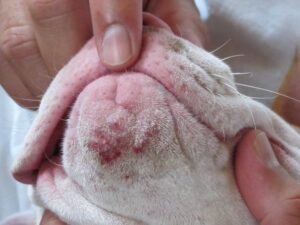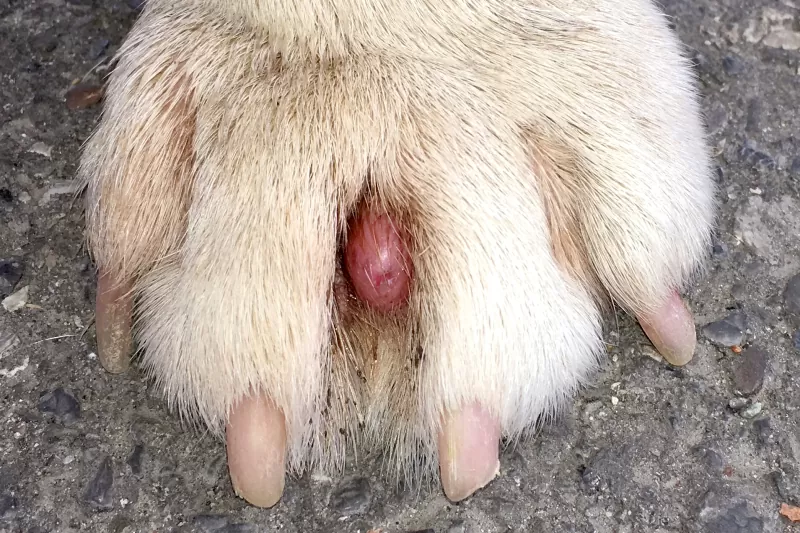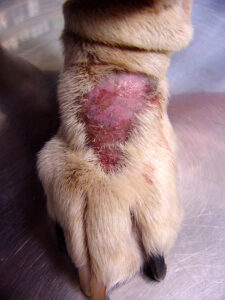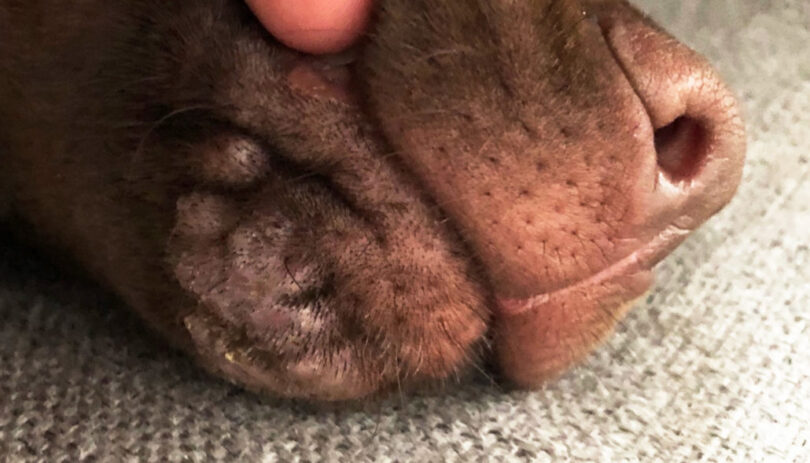Dog skin problems are very common. They can be prone to the same unpleasant medical issues that humans are. But what does it mean when you’re running your fingers through your dog’s fluffy fur and you come across a lump or bump that wasn’t there a few days ago?
Even though it can be a variety of things, most likely it’s their diet. And while the best advice is to always call your dog’s vet if you have any questions, the bill you get might not make it worth it to be your best first reponse, especially when your first thought might be, “Is this a dog zit?” and of course afterwards “what can I do about it”?
After many trial and errors, what took care of most of my dog’s skin problems was switching him to a real food diet. It took a few days to see a difference, but it was night and day after.
If you don’t have the time to cook at home for your pup (I know I don’t), then you will love this homemade dog food delivery service. It’s so convenient and my pup eats it up like fine dining.
If you do end up taking your pet for treatment, get a veterinary discount plan from Pet Assure first. It will save you on vet bills on day one and is good to have especially if it looks like your dog is developing skin problems.
Contents
Can Dogs Get Acne Bumps?
That’s the biggest question here, isn’t it? Just like teenagers, it is possible for adolescent dogs to get acne between the ages of 5 and 8 months. Some breeds are more prone to this skin condition, particularly short haired breeds like Dobermans, Bulldogs and Boxers. However, it will usually disappear once the dog hits a year old and is finished with his “teenage” years.
Other causes of acne bumps on dog skin can include trauma, poor hygiene, and even allergic reactions to food or products. Signs of canine acne can vary from dog to dog, but typical acne usually presents the same way it does in humans. The dog will get red bumps on their body, particularly around the lips, chin, and neck. So if your dog has bumps on chin and around mouth then now you know what it is.
SynergyLabs makes one of the best antiseptic and antifungal spray that many vets use for their pets skin problems.
Puppy & Dog Pimples

Big dog whitehead pimple or is it a cyst?
The blemishes become a problem when they become infected. Like the acne you get, the pimples on your dog can also become quite painful, causing them to rub their face against the carpet or furniture in an attempt to alleviate the pain. When they break open, they’re then open and susceptible to bacterial infections. This can be particularly bad if you see your puppy’s pimples on their belly.
When you combine open wounds with a dog’s tongue and their constant nose-to-ground explorations, you’re bound to see some sort of infection.
Like any skin condition, you shouldn’t treat your dog’s pimples unless he’s been examined by a veterinarian. There are other diseases out there that look like acne and can be quite dangerous to your dog’s overall health if they aren’t treated properly. However, if your vet has confirmed that your poor puppy’s pimple is actual sufferings from acne, they’ll give you some options based on what’s causing it.
If it’s hygiene related, regular bathing with a medicated formula such as SynergyLab’s can help mitigate the problem or your vet can prescribe a medicated wash. You should put some chlorhexidine pads in your first aid kit as every owners kit should be custom tailored to their own dog.
If your doctor has decided that it’s allergy related, you’ll have to narrow down the foods or products that your dog is allergic to. Recurring infections will mean your dog might need antibiotics to clear the infection up or steroids to keep the inflammation at bay.
One way to remove food out of the equation is to try either raw or fresh home-cooked meals. Most of them have a discounted trial period that you can take advantage of to help narrow down if it’s really what your dog eats that’s causing the issues.
Check out this video of a monster acne on a dog:
Dog Skin Conditions & Zits
If not dog pimples then what is it and how do you treat it?
As said above, it’s possible that your dog doesn’t have acne and he has another skin condition that just looks like pimples. Again, this can only be decided by your vet and shouldn’t be treated at home without medical guidance.
Do dogs get zits?
Sebaceous cysts can look very much like huge zits on dogs and it is one of the more common skin conditions in dogs. They occur when the sebaceous glands (that produce oil) become blocked and enlarged. They can range in size from small mosquito-bite sized to two inches across. Inside is a white, greasy fluid that looks like glue or cottage cheese that consists of oil, bacteria, and dead skin cells. This is

Dogs have many skin conditions, just like their human friends.
Sometimes they’ll rupture, reminding many owners of a giant whitehead, or the encased material can be manually squeezed out. Very large, irritated cysts have to be surgically removed (one reason among many that vet surgical tech has become a specialty).
Hives appear suddenly but chronic allergic reactions can be mistaken for acne. Hives are typically noticed on the face because there’s less hair present, but very large hives can be felt all over the body. Facial swelling might accompany the hives, thus eliminating the possibility that it’s acne. Your dog might sneeze or rub his face because it itches and his entire body might become red and irritated.
Dog Skin Allergies
Can pet allergies cause acne?
If you suspect your dog is having an allergic reaction to something (most commonly the food they eat), you should consult with your vet to decide on a course of antihistamine treatment. Facial swelling should be seen immediately by the vet to prevent your dog’s airway from being compromised due to the swelling.
Skin allergies in dogs should be taken seriously which means what they eat matters and not any dog food will do. If that’s the case, then you need to look for the best food for dogs with skin allergies and create a custom meal plan from one of these subscription services. Which would mean paying a bit more than usual.

Canine with granuloma.
Demodectic mange is a type of mange caused by the Demodex mite. When these mites overtake the dog’s skin, it can lead to hair loss, painful skin lesions, and even immune disorders. The infection can affect just specific areas of the body or the entire body. Some dogs might have patchy hair loss, while others will lose most of the hair on their body.
A few signed to check for if they have hair loss would be:
- Red skin
- Constant irritation and itchy skin
- At times their skin can get scaly as well
Your vet (or the assisting vet tech) will take a skin scraping and look at it under the microscope to find evidence of the mites. Severe cases will require medicated baths and even steroids to alleviate the itching and inflammation.
It goes without saying that any time you find a lump on your dog, no matter the size, you should take them to the vet.
Does pet insurance cover skin allergies?
Yes, it does. Its a type of autoimmune disease (a minor one), and should be treated as such by your insurance company. If not, then I suggest you try switching to Embrace Pet Insurance. It’s my new favorite insurance for my doggo.v
One thing is important for you to know is that no pet insurance company covers pre-existing conditions. So if your pet already exhibiting signs or symptoms of skin allergies and you are looking into getting pet insurance for the first time, this may be considered a pre-existing condition. You should bring it up with your insurance provider.
One thing for sure though, skin problems in dogs are unpleasant at best. Hopefully, it’s something as simple as acne, but it’s possible that it’s slightly more serious. Only a veterinarian can decide what’s a threat to your dog’s health and what’s relatively benign, but it’s also important to seek the proper treatment so your dog is as comfortable as possible.
If you are worried about the cost of calling your vet it reminds me when I had my first puppy. As concerned as I was I always worried about the costs first which wasn’t fair to my pupper.
That’s one reason I eventually decided to get dog insurance is so I can stop worrying and focus more on my pup’s health than trying home remedy after home remedy to avoid the vet’s bill.







